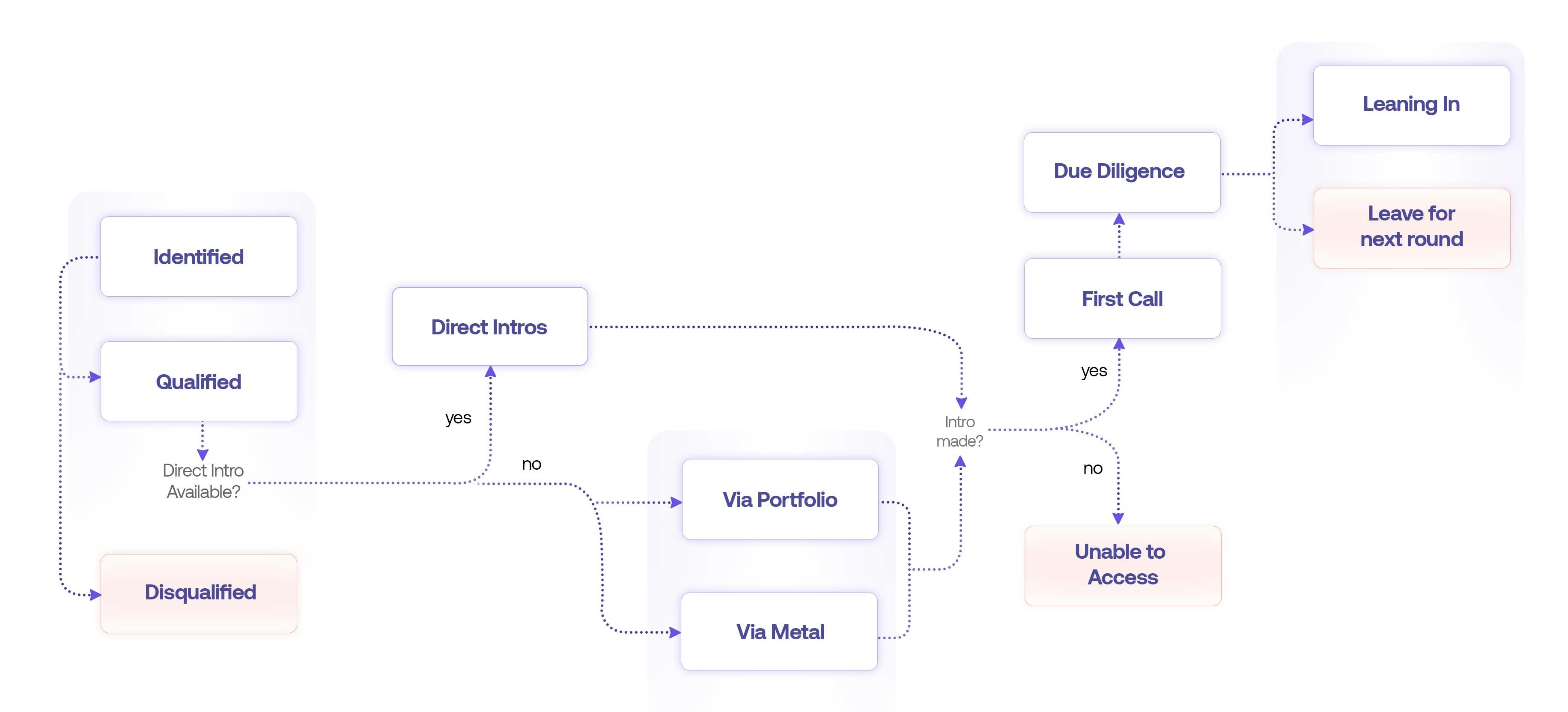Developing a Systematic Process
As you start the raise process, one critical piece is to develop a systematic process that delivers results in a replicable, consistent and predictable manner. The below view illustrates the various steps of a successful raise process:1
Recurring Process to Identify & Qualify Investors
Founders need to build a systematic process to identify and qualify strong-fit investors. The process needs to push fresh energy into the top of the funnel on a recurring basis every week and/or month.
For guidelines on identifying and qualifying investors, refer to this section.
2
Land Introductions
Once the right mix of investors are identified, founders need a systematic process to land introductions. The critical aspect is to ensure that the process delivers results on a. recurring basis.
For guidelines on how to build access, refer to this section.
3
Convert First Calls to Due Diligence
In the final step of the process, founders need to convert some of their first calls with investors into due diligence. After tracking a large number of raise processes, our estimates suggest that between 10-50% of first calls should convert into due diligence discussions in which the investor wants to dig in and evaluate the opportunity for a potential investment.
Recommended Process
In order to manage the raise systematically, it is important for founders to have general clarity on the process that they want to follow. The below visual illustrates a recommended process: The visual provides a decision-making framework for common scenarios in the raise process. Instead of getting stuck on the dead-ends, users can view these as inevitable “resting points” for many investors that are either not leaning or, or that they are unable to access. The below table expands on the key decision points in the process to ensure a high-velocity approach:
The visual provides a decision-making framework for common scenarios in the raise process. Instead of getting stuck on the dead-ends, users can view these as inevitable “resting points” for many investors that are either not leaning or, or that they are unable to access. The below table expands on the key decision points in the process to ensure a high-velocity approach:
| Process Part | Scenario | Recommended Decision | Rationale |
|---|---|---|---|
| Identification & Qualification | The investor does not meet one of the criteria identified by the user | Disqualify the investor and move on | It is critical to spend time on the right investors |
| Access | User is unable to identify an intro path and/or get an intro | Temporarily move the investor to “Unable to Access” and move on | There are probably many other investors that are a strong-fit and that you can easily access |
| Process | Investor has gone silent and/or has not responded to the last follow up email | Move the investor to the “Leave for Next Round” stage and move on | It is crucial to know when an investor is not leaning in, and to focus efforts on ones that are are leaning in |
Process Velocity
A high-velocity pipeline is one in which new investors move through the different stages at a rapid pace. By bringing process excellence to identifying and accessing investors, founders can develop a high-velocity rhythm to maximize the odds of success. In order to run the fundraising pipeline at a rapid pace, founders need to develop up-front clarity on how to tackle given situations. With the above process, users know exactly how to respond when unable to access a given investor, or when an investor stops engaging.In our experience of observing thousands of raises, a high-velocity process is the most predictive element that defines the probability of a successful raise. Founders that raise tend to move through the pipeline 5x faster than those that end up not raising.